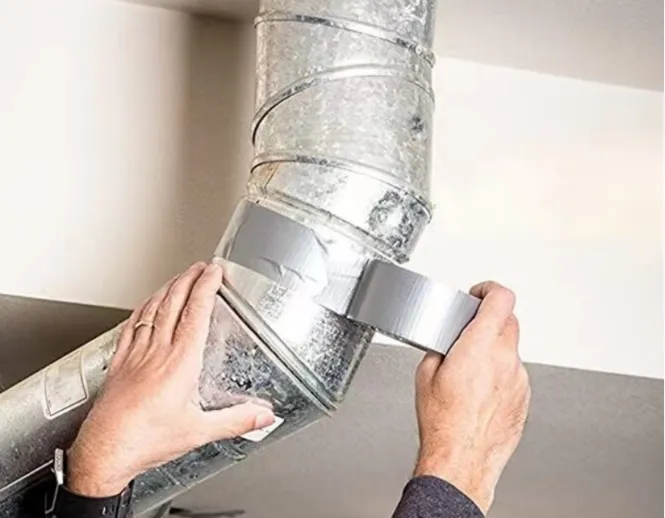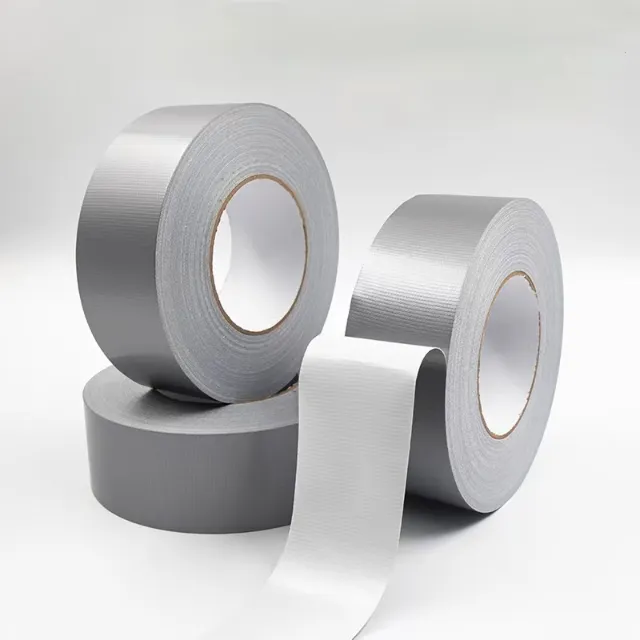
Introduction
Sealing HVAC ducts is super important. It saves energy, keeps indoor air clean, and lowers repair costs. Leaky ducts waste cash and let dust or allergens sneak in. Choosing the right tape is critical for a solid HVAC system. Waterproof cloth tape is tough and works great in harsh conditions. Pros often pick it for long-lasting results.
Common Duct Sealing Challenges
HVAC systems deal with lots of problems that make sealing hard. Air leaks happen often and hurt performance. The environment throws in challenges like temperature changes or dampness. Sticking issues pop up too, especially with the wrong stuff.
Air Leaks and Energy Loss
Ducts often leak air. This lets treated air escape. The system works harder, spiking energy bills. It’s less efficient. Research says unsealed ducts can lose up to 30% of airflow. It’s not just money—rooms feel uneven, hot or cold. Fixing leaks early saves a ton over time.
Environmental Factors
Ducts expand or shrink with heat or cold. This stresses seals. Humidity causes condensation on cold surfaces. Regular tapes peel off in these spots. Basements or attics stay damp, making it worse. Dust piles up too, over time.
Adhesion and Durability Issues
Normal PVC tapes or foil tapes don’t stick well to metal or insulated ducts. They might hold at first but give out under pressure. Rough surfaces or grease weaken the bond. That’s why pros choose cloth-based tapes. They grip better and last longer in tough setups.
Why Choose Waterproof Cloth Tape for HVAC
Waterproof cloth tape beats other options for duct work. Its fabric backing is flexible and sticks well. The glue handles water and heat. It’s easy to use, speeding up jobs.
Strong, Reliable Adhesion
The cloth design works with strong, sticky glue. It bonds to steel, fiberglass, or foam insulation. It fits over uneven spots without ripping. In tight corners or bends, it seals snug. No stress about gaps opening up.
Moisture and Temperature Resistance
HVAC systems get wet and hot. Waterproof cloth tape fights off dampness and condensation. It stays put from freezing to over 200°F. This stops mold and air loss. It’s perfect for ducts in humid places or near water.
Easy Application and Maintenance
Cloth tape tears by hand—no scissors needed. It sticks quick but can be moved if you goof. Maintenance is a breeze; it peels off clean. QKD tape makes waterproof cloth tapes with tough adhesion and simple handling, great for HVAC jobs. Skipping this step? You’ll regret it when repairs stack up.

How to Properly Seal HVAC Ducts
Sealing ducts right needs prep and focus. Follow these steps for a good job. Start simple and build up. You’ll need: tape, cleaner, gloves.
Step 1: Clean and Prepare the Surface
Wipe off dust, grease, or old tape scraps. Use a mild cleaner and dry it fully. Wet surfaces mess up sticking. Check for rust or damage too. A clean duct helps tape hold tight.
Step 2: Measure and Cut Accurately
Measure the seam first. Cut tape a bit longer for overlap. Keep cuts straight to avoid wrinkles. For round ducts, curve the tape gently. Getting this right saves time and tape.
Step 3: Apply with Firm, Even Pressure
Peel the backing off. Press tape down hard. Use a roller or your hand to make it smooth. Push out air bubbles as you go. Overlap ends by two inches at least. Pressing firm makes the glue work best.
Step 4: Inspect and Reinforce
Check the seal for gaps or lifts. Run air through the duct to test, if you can. Add extra tape strips at corners. For hot or wet ducts, use a waterproof cloth tape like QKD tape’s industrial grade options. Double-check it all before finishing.
Mistakes to Avoid in Duct Sealing
Even experts mess up sometimes. Common mistakes cause quick failures. Don’t use non-waterproof tapes in damp spots. Never skip prep. Stretching tape too much leads to trouble later.
Using Non-Waterproof Tape
Regular tapes fail in wet areas. They soak up moisture and lose grip. Condensation is a given in HVAC. Use waterproof tape to avoid this hassle.
Ignoring Surface Preparation
Skipping cleaning is a recipe for trouble. Dust or grease blocks sticking. Cold ducts with condensation make it worse. Always clean first—it’s the key to a good seal. Rushing means more fixes later.
Overstretching the Tape
Pulling tape too tight creates problems. It loosens over time, curling at the edges. Apply it with a bit of slack instead. This keeps seals strong. I’ve seen rushed jobs fail because of this.
Key Considerations When Choosing Cloth Tape
Picking the right tape means thinking about a few things. Sticking power is number one, then handling elements. Ease of use helps get the job done fast.
Adhesion Strength and Material Compatibility
Choose tapes that stick to different surfaces. Look at ratings for shear and peel strength. They need to work with metals or insulation. Weak sticking means leaks show up quick.
Water and Temperature Resistance
Check if the tape blocks moisture. It should handle -20°F to 250°F without cracking. This keeps it reliable all year. Good specs mean no worries.
Ease of Application and Clean Removal
Tape should tear easy and stick without tools. It needs to come off clean for fixes. QKD tape’s waterproof cloth tapes meet these standards with strong R&D and quality. Great for pros.
Conclusion
Sealing ducts well with quality waterproof cloth tape makes your HVAC system efficient and tough. It saves energy and keeps air clean. Prep and the right materials are everything.
Take Action Now – Upgrade Your HVAC System!
Don’t let leaky ducts keep draining your energy bills and comfort! Choose QKD tape’s professional waterproof cloth tape today for a lasting seal that saves up to 30% on energy, blocks moisture and dust, and extends system life. Visit the QKD tape website or contact us now for custom solutions and bulk discounts. Click to consult and start your efficient, reliable HVAC journey!
FAQ
Q1: What makes waterproof cloth tape better than foil tape for HVAC ducts?
Cloth tape is more flexible and sticks better on uneven surfaces. Foil tape reflects heat well but cracks in wet spots. Cloth handles humidity without failing.
Q2: How long does a proper duct seal last?
With good tape and prep, seals last 5-10 years. Things like environment or heavy use can affect it. Check regularly to catch problems early.
Q3: Can I seal ducts myself or need a pro?
Small jobs are okay for DIY if you follow the steps. For big systems or tricky spots, get a pro. Stay safe, especially in tight spaces.
Q4: Is waterproof cloth tape safe for all duct materials?
Yes, it works on metal, flexible, or insulated ducts. Check compatibility to be sure. Most brands list what surfaces work.
Q5: What if my ducts are already leaking badly?
Clean and seal as described. If damage is bad, replace parts. Tape fixes leaks but not big structural issues. Get an inspection if you’re not sure.
